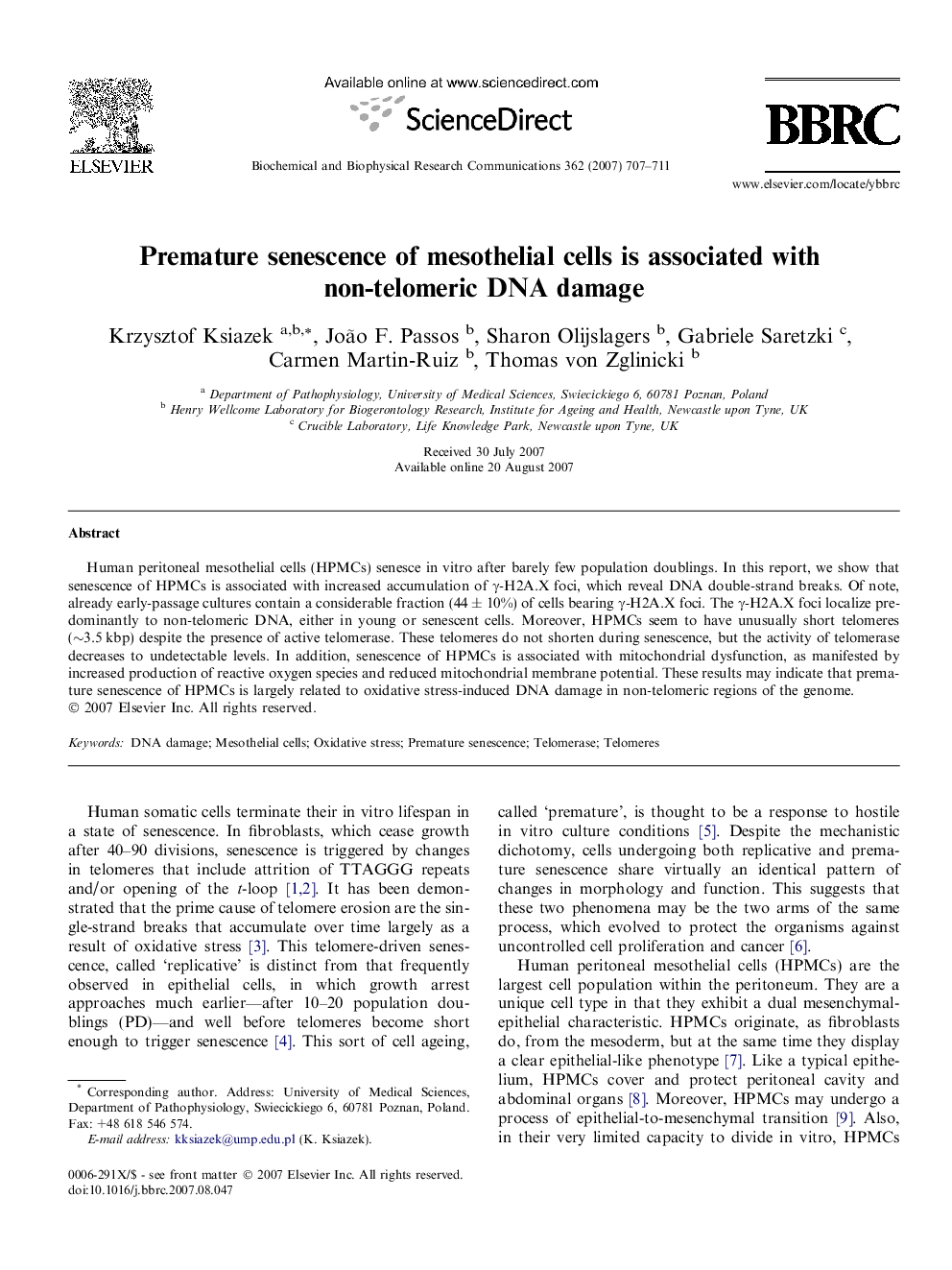| Article ID | Journal | Published Year | Pages | File Type |
|---|---|---|---|---|
| 1937037 | Biochemical and Biophysical Research Communications | 2007 | 5 Pages |
Human peritoneal mesothelial cells (HPMCs) senesce in vitro after barely few population doublings. In this report, we show that senescence of HPMCs is associated with increased accumulation of γ-H2A.X foci, which reveal DNA double-strand breaks. Of note, already early-passage cultures contain a considerable fraction (44 ± 10%) of cells bearing γ-H2A.X foci. The γ-H2A.X foci localize predominantly to non-telomeric DNA, either in young or senescent cells. Moreover, HPMCs seem to have unusually short telomeres (∼3.5 kbp) despite the presence of active telomerase. These telomeres do not shorten during senescence, but the activity of telomerase decreases to undetectable levels. In addition, senescence of HPMCs is associated with mitochondrial dysfunction, as manifested by increased production of reactive oxygen species and reduced mitochondrial membrane potential. These results may indicate that premature senescence of HPMCs is largely related to oxidative stress-induced DNA damage in non-telomeric regions of the genome.
